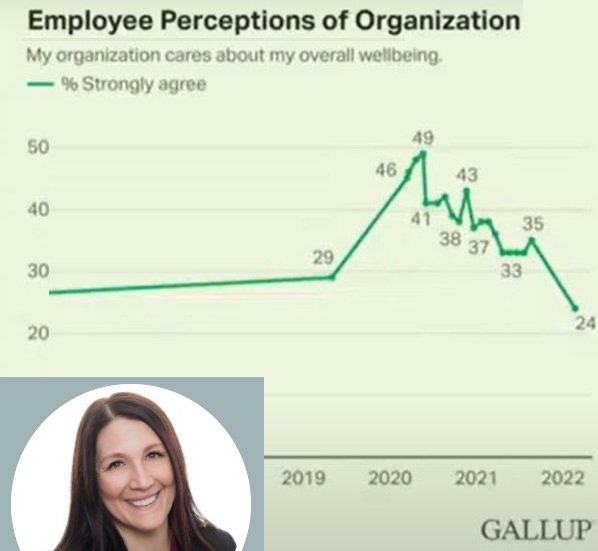City slips behind, seeks to address growing workforce challenges
6 min read
It’s not just the Eugene Police. Employees from every department at the city of Eugene are leaving, and the city is having a hard time finding new workers. At the council work session Sept. 14, Mia Cariaga.
[00:00:12] Mia Cariaga (Central Services Director, City of Eugene): Our organization worked really hard through the recession to make ends meet and continue providing important services to the community with as little impact as possible. But we’re at a point in our culture where we’re seeing tension in that we have folks leaving the organization and we’re falling behind with our competitors who are able to keep more manageable workloads for their employees.
[00:00:33] Trends across the workforce indicate that people are looking for work that it was outlined in their job description. And this is not how we’ve asked our own employees to work. We’ve been flexible and adaptable through the pandemic and people have taken on things that they never expected to, and they’ve done so, you know, willingly and in want of supporting the community. But it’s definitely taking a toll.
[00:00:55] The murder of George Floyd elevated and highlighted issues of race in the workplace in ways that we hadn’t previously experienced. Through conversations with our BIPOC employees, collectively, we became more aware of the trauma and stress of those folks and what they were carrying prior to 2020 and, of course, since.
[00:01:13] And like the experience of most employers, we have seen employee expectations about how we dress address racial gaps and shortcomings rise. All of this shapes how our city team thinks about their work and our organization and how they think about us as an employer in comparison to others around us.
[00:01:31] John Q: Mia said employees are starting to leave and the city is not able to hire people to succeed them.
[00:01:36] Mia Cariaga: The percentages of folks leaving by bargaining unit, roughly tracks with national data. So AFSCME is just above, at 12%; EPEA is right around 10%; IAFF, the BCs and IATSE are significantly lower. The more alarming one is our non-rep exit rate. So in 2021 that was at 16%. We’re halfway through 2022, and we’re on track to exceed that number if we’re just to double that column.
[00:02:03] And then if we look at the rate at which we’re able to hire folks, you’ll see that these numbers don’t align. We’re putting a lot more effort into recruitment and gaining a smaller yield. Again, the market is really competitive right now, and worker’s expectations and values are shifting constantly. For a long time, we were a leader in wage benefits and pension plans, and we find ourselves in a place where we aren’t keeping up, particularly for non-reps where we don’t have a system for market review, like we do for our unions. And so we know that there are areas in the organization where we’re likely out-of-market and we’re—that work is currently underway.
[00:02:37] And we also know that part of this exit story is that there is not a balanced workload for many of our employees. Sustainable workload is a big focus of our work that’s ahead.
[00:02:49] These shifts contribute to what we’re calling a worker’s market. Because many people left the workforce through the pandemic, highly-qualified candidates have many opportunities and their choice of jobs. So recruitment and retention has become a very, very competitive environment, particularly in sectors where our opportunities are competing with private sector jobs.
[00:03:09] John Q: In addition to race and union membership, the city looked at employee trends by gender and age.
[00:03:15] Mia Cariaga: Like most of the country, the number of women in our organization has declined from pre-pandemic levels. There are a number of reasons for this, but some that didn’t exist as prevalently before the pandemic are that women are leaving because of childcare issues or to better balance what’s happening in their personal lives…
We have over 100 employees currently eligible to retire and over 200 who will be eligible within three years or less. That’s almost 20% of our workforce, which is somewhat alarming, because as folks retire, we lose, of course, their historical knowledge and expertise.
[00:03:48] This also shows us that we are supporting a workforce that spans multiple generations. And we’re not alone in this. This is the workforce in general. There are slices across all generations in most sectors, regardless of the industry.
[00:04:00] And so, for example, in our organization, we think about health benefits that support our newer employees who may be starting families. And we also think about employees who have aging parents and how we can best support them. But we’re working at both ends of the spectrum there.
[00:04:15] But really the generation coming into the workforce now, Generation Z, has a lot of energy about what it’s like to work and be in our workforce in a way that our employees that are close to retirement just don’t think about.
[00:04:28] So while older generations may have put a lot of weight on benefits or stability, newer generations have a really different value system. They’re looking really closely at employers and want to work for companies and organizations that align with their own values. And the other trend we’re seeing is that they really want to do the job that they were hired to do, so, align their work with their job descriptions.
[00:04:53] John Q: This is all happening as the city faces increased needs for services and unfunded mandates.
[00:04:59] Mia Cariaga: The economic impacts of the pandemic have increased pressure on all governments to support people who generally have less resources than they once did. So through the thick of the pandemic, we started supporting folks who were sick or out of work or without housing and inflation and interest rates are up now. So all of those things contribute to the fact that people in our community have ever-changing, shifting economic situations. So just a lot of instability of course, across the country, but in our community.
[00:05:28] The number of unfunded mandates that come from federal or state level are putting increasing pressure on our teams, who are trying to find capacity for new required work within their already full plates.
[00:05:38] So Oregon Equal Pay Act; Governmental Accounting Standards Boards updates; police accreditation requirement for departments of our size; health and safety regulations (those have changed significantly for our employees who work in childcare— our custodians’ lives are totally different); accessory dwelling units legislation; Department of Environmental Quality waste prevention requirements; Public Records Law updates; police body-worn camera requirement updates; climate-friendly and equitable communities requirements; Paid Leave Oregon program, and middle housing legislation. They are some of the really big unfunded mandates that have come to our organization at a time when we’re struggling to meet our previous needs too.
[00:06:19] And even the nature of the existing work is changing and expanding. So, another example: The district attorney recently announced that their office will no longer be pressing charges for some non-violent offenses due to their own staffing shortages. And we don’t know exactly what that’s going to look like yet, but it will inevitably impact EPD, the prosecutor’s office, and municipal court directly, and then indirectly, we’re really not sure how the impacts of that will play out into the community and what might fall to us.
[00:06:48] John Q: To top it off, fewer Americans think their employers care about them.
[00:06:55] Mia Cariaga: This is data from Gallup, ‘How people feel about how their employer takes care of their wellbeing.’ It’s national data. While more people trusted their employers at a growing rate up to 2020, that number topped out in 2020, that number has started to decline.
[00:07:13] And what we know is that if people feel taken care of, they’re more likely to be productive at work, more likely to promote their employer to their friends, more likely to take care of their own health. And then teams who share this perspective have better customer service and are also more productive and happy.
[00:07:29] John Q: After George Floyd and the pandemic, the City looks to make changes that will help attract new staffers.



